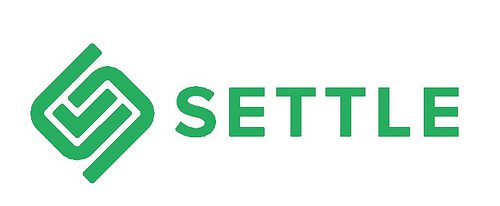The stats
- Founded August 2014
- $1.8 million in funding
- 15 employees
- 50,000 users
- 500+ merchant partnerships for their loyalty/rewards platform
The experience
To create a better customer experience, Settle provides merchants tools, including:
- Point-of-sale system
- Customer-facing pre-order system
- Loyalty platform
- Merchant analytic tools
How it works:
Customers
Using the Settle app on an iOS or Android device, customers make a payment at business’ Settle point-of-sale system.
At checkout, customers review their order and select the Pay button. For service-based merchants, such as a coffee shop, bar, or cafe, the customer also selects the tip amount.
The transaction is paperless, with the receipts emailed.
To gather feedback for the merchant, customers are prompted to rate their experience.
At restaurants and coffee shops, customers can place their order ahead of time and skip the line. The system also manages reservations.
Merchants
Settle offers a merchant platform that makes entering orders easy. It also helps cashiers personally connect with returning customers. When a Settle user walks in the door, the system prompts the cashier with the customer’s name, their usual order, and notes about the person (i.e., always in a hurry).
Aside from the point-of-sale interface, Settle comes with two compelling features:
1) Loyalty
Since the loyalty platform does not require stamps, cards, or checking-in, it is a low-friction way to encourage repeat purchases.
The Settle system incentivizes users to spend more in order to receive a larger discount. In the example below, the user needs to spend a total of 3,000 Ukrainian Hryvnia (around $230) to receive a permanent, ongoing 10% discount.
2) Merchant tools
With Settle’s Smart Engine, merchants see recent customer activity and can download a spreadsheet detailing new and returning customers, their purchase frequency, the total amount spent, average check amount, and how much they tip. Merchants can also evaluate their sales over time (see graph below).
On the employee side, the system shows ratings for each waiter, along with the number of clients handled per check, and how well they are tipped.
The recommendations engine detects anomalies, such as decline in overall sales or average check, and advises how to fix the issue. Additionally, it automatically creates a list of customers who have not returned, and sets up a discount offer to entice them back.
The back-end system also enables merchants to push special deals and messages based on certain parameters, such as average spend and birthday month. Once the offers are sent, merchants can measure their effectiveness by seeing how many opened the message and redeemed the offer.
These examples illustrate the mobile purchasing experience, but Settle can also be used online. For both in-person and online purchases, customers are required to confirm the payment on their mobile device. This built-in two-factor authentication creates a more secure experience.
What’s new
The Settle app is currently working in Ukraine, Russia, and other Eastern European countries. It has plans to expand into Europe and is considering the U.S. market. For this expansion, it is seeking a U.S. bank partner.







